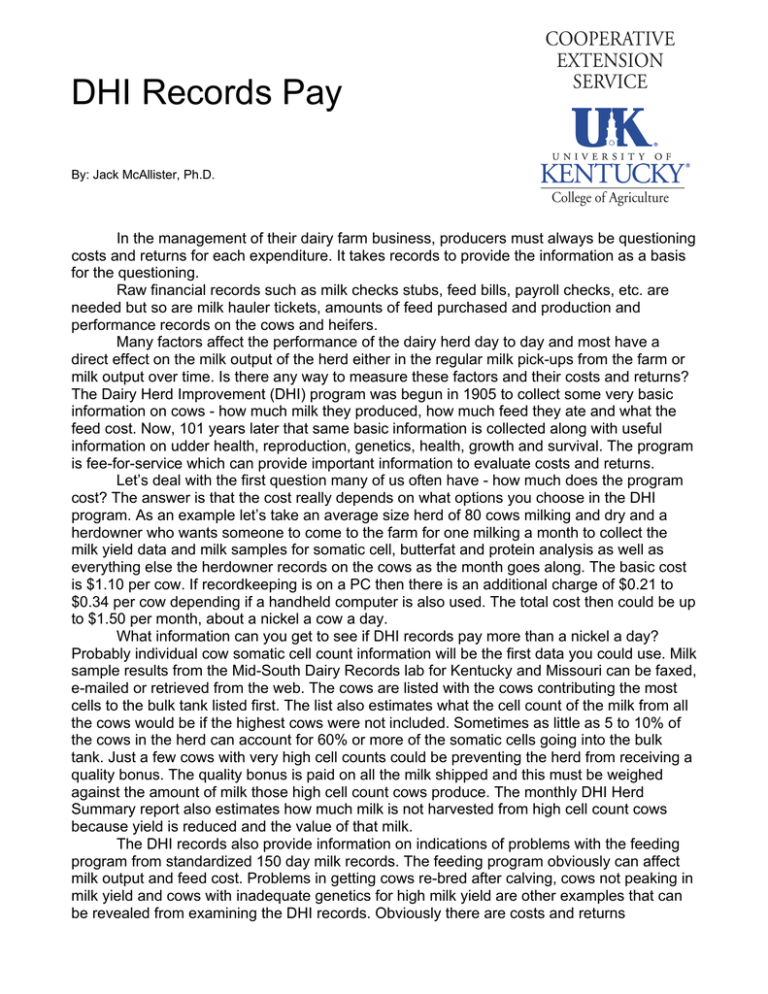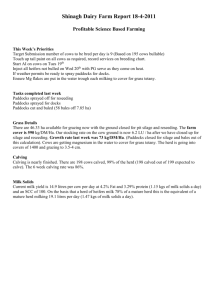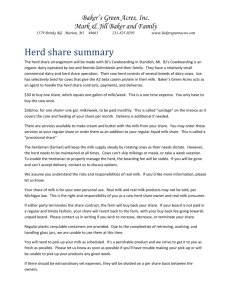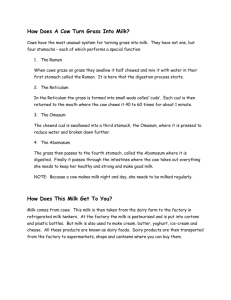DHI Records Pay
advertisement

DHI Records Pay By: Jack McAllister, Ph.D. In the management of their dairy farm business, producers must always be questioning costs and returns for each expenditure. It takes records to provide the information as a basis for the questioning. Raw financial records such as milk checks stubs, feed bills, payroll checks, etc. are needed but so are milk hauler tickets, amounts of feed purchased and production and performance records on the cows and heifers. Many factors affect the performance of the dairy herd day to day and most have a direct effect on the milk output of the herd either in the regular milk pick-ups from the farm or milk output over time. Is there any way to measure these factors and their costs and returns? The Dairy Herd Improvement (DHI) program was begun in 1905 to collect some very basic information on cows - how much milk they produced, how much feed they ate and what the feed cost. Now, 101 years later that same basic information is collected along with useful information on udder health, reproduction, genetics, health, growth and survival. The program is fee-for-service which can provide important information to evaluate costs and returns. Let’s deal with the first question many of us often have - how much does the program cost? The answer is that the cost really depends on what options you choose in the DHI program. As an example let’s take an average size herd of 80 cows milking and dry and a herdowner who wants someone to come to the farm for one milking a month to collect the milk yield data and milk samples for somatic cell, butterfat and protein analysis as well as everything else the herdowner records on the cows as the month goes along. The basic cost is $1.10 per cow. If recordkeeping is on a PC then there is an additional charge of $0.21 to $0.34 per cow depending if a handheld computer is also used. Τhe total cost then could be up to $1.50 per month, about a nickel a cow a day. What information can you get to see if DHI records pay more than a nickel a day? Probably individual cow somatic cell count information will be the first data you could use. Milk sample results from the Mid-South Dairy Records lab for Kentucky and Missouri can be faxed, e-mailed or retrieved from the web. The cows are listed with the cows contributing the most cells to the bulk tank listed first. The list also estimates what the cell count of the milk from all the cows would be if the highest cows were not included. Sometimes as little as 5 to 10% of the cows in the herd can account for 60% or more of the somatic cells going into the bulk tank. Just a few cows with very high cell counts could be preventing the herd from receiving a quality bonus. The quality bonus is paid on all the milk shipped and this must be weighed against the amount of milk those high cell count cows produce. The monthly DHI Herd Summary report also estimates how much milk is not harvested from high cell count cows because yield is reduced and the value of that milk. The DHI records also provide information on indications of problems with the feeding program from standardized 150 day milk records. The feeding program obviously can affect milk output and feed cost. Problems in getting cows re-bred after calving, cows not peaking in milk yield and cows with inadequate genetics for high milk yield are other examples that can be revealed from examining the DHI records. Obviously there are costs and returns associated with each of these problems. The records won’t solve the problems but they can help identify causes. Management can hopefully solve the problems once they are identified. DHI records can pay if they contribute to generating about one-half a pound of milk more per cow per day. Educational programs of Kentucky Cooperative Extension serve all people regardless of race, color, age, sex, religion, disability, or national origin.








